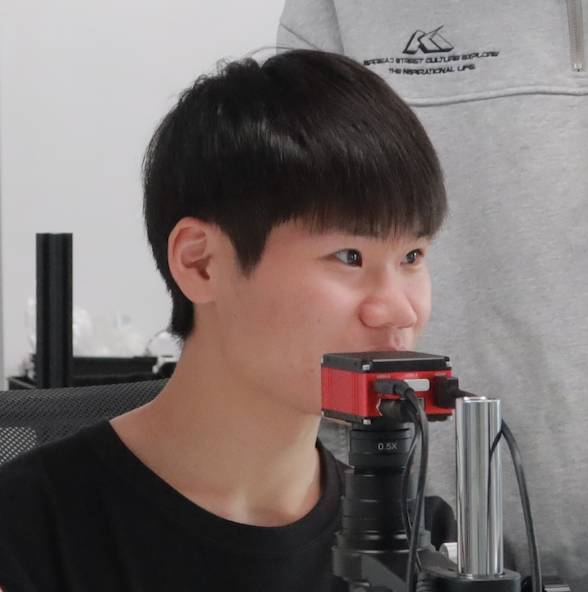Introduction
Surface Mount Technology (SMT) has revolutionized electronics manufacturing, enabling smaller, more complex PCBs with higher component densities than ever before.
Within the SMT production line, the mounting (placement) phase represents a critical quality checkpoint – components must be placed with extreme precision, often at speeds exceeding 60,000 components per hour.
Machine vision systems are essential for verifying this placement, but traditional optical solutions often struggle with the speed, precision, and lighting variability inherent in modern SMT production.
This article examines how large aperture FA lenses, particularly the Visionlabhub®️ FT230 series, address these challenges to improve inspection quality and production efficiency.
SMT Mounting Process: Precesion at High Speed
The mounting process in SMT production involves the precise placement of electronic components onto solder paste previously applied to a PCB.
Modern mounting machines use vacuum nozzles on high-speed pick-and-place heads to select components from feeders and position them on the board. This operation requires exceptional accuracy, typically within ±0.05mm for fine-pitch components.
The process involves several critical steps:
- Component pickup from feeders or trays
- Component recognition and centering
- Pre-placement inspection for orientation and defects
- Precise positioning on the PCB
- Post-placement verification of position and orientation
Each of these steps relies on machine vision systems to ensure quality and detect errors before they become costly defects. The mounting phase operates in a challenging environment where speed, precision, and adaptability converge.
Industry Pain Points in SMT Mounting Inspection
Machine vision inspection during SMT mounting faces several significant challenges:
Limited Exposure Time: With placement speeds reaching 60,000+ components per hour, the vision system has mere milliseconds to capture and analyze each image. This constraint severely limits exposure time, making light gathering efficiency critical.
Miniaturization Challenge: As components become increasingly smaller (01005 components are just 0.4mm × 0.2mm), imaging systems must provide sufficient resolution to detect minuscule defects while maintaining a usable field of view.
Variable Reflectivity: PCBs feature multiple surface types with different reflective properties – from matte substrate to highly reflective pads, components with metallic, ceramic, or plastic surfaces, and solder paste with varying shininess.
Shadowing Issues: The topography of partially populated boards creates complex shadowing that can obscure critical features and compromise inspection accuracy.
Insufficient Contrast: Poor contrast between similar-colored components and the PCB substrate can make detection of subtle misalignments extremely difficult.
Mixed Component Environment: A single PCB often contains diverse component types requiring different inspection parameters, from large ICs to tiny passive components.
Machine Vision Requirements for Effective Mounting Inspection
Addressing these challenges requires vision systems with specific capabilities:
Higher Light Sensitivity: The ability to gather sufficient light in extremely short exposure times is essential for clear imaging at production speeds.
Superior Resolution: The system must distinguish minute features such as component markings, edge definition, and subtle misalignments.
Depth of Field Flexibility: When inspecting boards with components of varying heights, the system needs sufficient depth of field to keep relevant features in focus.
Contrast Enhancement: The optical system must maximize contrast differences even in challenging lighting conditions.
Consistent Performance: The lens must deliver reliable results despite vibration, temperature variations, and extended operation cycles.
How Large Aperture Lenses Address These Challenges
Large aperture lenses offer several decisive advantages in addressing SMT mounting inspection challenges:
Enhanced Light Gathering: A larger aperture (smaller F-number) allows more light to reach the sensor during the brief exposure window, resulting in brighter, clearer images with reduced noise – even at the fastest production speeds.
Improved Signal-to-Noise Ratio: The increased light throughput improves the signal-to-noise ratio, enhancing the system’s ability to detect subtle defects and misalignments with greater confidence.
Better Low-Light Performance: Large aperture lenses require less supplementary lighting, reducing both system complexity and the heat generated by intense illumination systems.
Control Over Depth of Field: When needed, the aperture can be adjusted to increase depth of field for inspecting boards with significant height variations, providing flexibility not available in smaller aperture systems.
Higher Contrast Imaging: The improved light management capabilities of large aperture lenses enhance contrast between similar surfaces, making defect detection more reliable.
Visionlabhub®️ FT230 Lens Solutions for SMT Mounting Applications
The Visionlabhub®️ FT230 Series Fixed Focal Length Lenses have been specifically designed to address the challenges of high-speed SMT inspection. With support for up to 2/3″ sensors and resolutions reaching 10 megapixels, these lenses deliver the performance required for today’s most demanding SMT applications.
Key Technical Specifications
- Maximum sensor support: 2/3″
- Resolution support: Up to 10MP
- Compatible with pixel sizes down to 2.5μm
- Large F/1.4 aperture across focal length options
- Available focal lengths: 4.5mm, 8mm, 12mm, 16mm, 25mm, 35mm, and 75mm
- Compatible with leading industrial sensors including GMAX2509, IMX536, IMX537, GMAX2505, and IMX252
Specific Advantages for SMT Mounting
Superior Optical Design: The FT230 lenses feature advanced optical designs that minimize distortion across the entire field of view, ensuring accurate dimensional measurements of component placement – critical for fine-pitch devices.
Enhanced Light Sensitivity: With F/1.4 aperture, the FT230 series captures 4X more light than typical F/2.8 industrial lenses, enabling significantly shorter exposure times while maintaining image quality. This capability is crucial for keeping pace with the fastest pick-and-place machines.
Exceptional Resolution: Optimized for high-resolution sensors with pixel sizes down to 2.5μm, these lenses can resolve the finest details of 01005 components and detect subtle orientation errors that would escape detection with standard lenses.
Robust Construction: Built with industrial-grade durability, including secure locking mechanisms for focus and aperture settings, the FT230 lenses maintain calibration despite the vibration inherent in high-speed SMT equipment.
Compact Design: The space-efficient construction allows for integration in tight spaces, ideal for the multiple camera setups often required in SMT mounting equipment.
Implementation and Results
Companies implementing the Visionlabhub®️ FT230 lenses in their SMT mounting inspection systems have reported significant improvements:
- 35% reduction in false reject rates due to improved image clarity
- Ability to increase production speeds by up to 25% while maintaining inspection quality
- Enhanced detection capabilities for 01005 and 0201 components
- Reduced lighting system complexity and associated heat generation
- Greater reliability in detecting subtle misalignments, particularly for fine-pitch components
One electronics manufacturer specializing in automotive components implemented the FT230 lenses in their high-speed mounting inspection and documented a 42% improvement in the detection of subtle defects that previously escaped to later process stages. This improvement translated to significant cost savings by reducing rework and field failures.
The integration process typically involves:
- Selection of the appropriate focal length based on working distance and field of view requirements
- Optimization of lighting setup to leverage the improved light-gathering capabilities
- Calibration of the vision system to take advantage of the enhanced resolution
- Fine-tuning of inspection algorithms to benefit from the improved image quality
Conclusion
As SMT production continues to push the boundaries of speed and miniaturization, the optical requirements for effective inspection become increasingly demanding. Large aperture lenses, such as the Visionlabhub®️ FT230 series, represent a critical advancement in addressing these challenges.
By providing superior light gathering capability, exceptional resolution, and industrial-grade reliability, these lenses enable machine vision systems to keep pace with the most demanding SMT mounting processes. The result is more reliable defect detection, higher production throughput, and improved overall quality in electronic manufacturing.
For electronics manufacturers seeking to optimize their SMT mounting inspection, large aperture lenses offer a compelling solution that addresses the fundamental optical limitations that have historically constrained inspection quality and speed. The Visionlabhub®️ FT230 series delivers this performance in a package designed specifically for the unique challenges of the SMT production environment.











